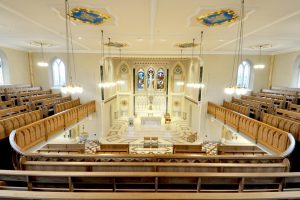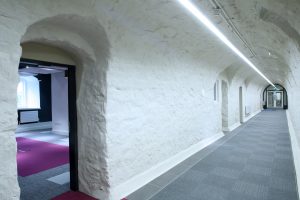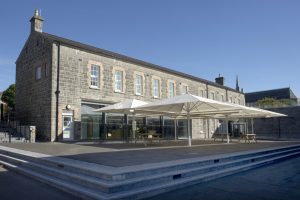
Sean Mullen on How to Approach a Heritage Project
To date I have been involved in many challenging yet very rewarding projects in the heritage/conservation sector. In my opinion, a key element to any successful heritage project is to approach the project using the principle of minimal intervention, and to ensure that conservation work is carried out using the correct methods and most appropriate materials by qualified and experienced craftsmen. It is also important to have an experienced and quality-assured supply chain that has worked on successful heritage projects. Key subcontractors to have onboard include brick cleaning, glazing, metalwork, specialist joinery, ironmongery, leadwork, lime plasterwork, mosaic restoration, stone conservation, and thatchwork. On all projects, I also ensure a Structural Engineer is appointed to act as Temporary Works Designer. This is important as when working on old buildings there are usually no as-built drawings, so the structural integrity of the building can never be fully ascertained until the building is opened up.
Typically, a heritage project involves a marriage between old and new materials. Understanding building pathology and knowing where to focus, such as ensuing air flow within walls and roof voids to eliminate interstitial condensation is critical. In terms of supervision, assigning a Site Manager who is experienced in heritage work is therefore imperative. The best Site Managers I have worked with are experienced craftsmen who can make practical decisions at site level, understand the capabilities of subcontractors, and personally inspect and sign off each element of work.
Recent standout heritage projects I have worked on for QMAC Construction include:
St. Patrick’s Church, Donaghmore: This involved the internal and external restoration of an old, listed church. A key part of the project involved creating a temporary support for the entire roof to allow it to be repositioned as it had become structurally displaced. Using specialist craftsmen to conduct the restoration work, the end-product was stunning. The church was effectively reborn and remains a beautiful focal point in the village.

Dr. Steevens’ Hospital, Dublin: This project involved creating modern offices within an old disused basement within a hospital estate. This included extensive lime plasterwork within the old original walls. Lime is a very delicate material; anyone using it needs to fully understand its credentials and how to correctly use it. The walls also suffered from damp. I appointed a specialist subcontractor to deliver a strategy to treat the walls based on introducing a damp-proof breathable barrier to preserve the walls for future generations. The building now has modern flexible office space, which complements the existing stone and plasterwork. Experienced craftsmen, with time allocated to enable them to properly exercise their trade was central to the success of the project.

Enniskillen Castle: The project involved converting old, listed buildings into modern exhibition space. A key challenge was that the castle estate had to remain fully operational throughout as it is a major tourist destination in Enniskillen. This was achieved by having a live Site & Pedestrian Management Plan to ensure disruption was avoided.

In summary, a heritage project should be approached with an experienced team who are focused on quality of workmanship. If the project is properly resourced with adequate time provided for each trade activity, then such projects are a pleasure to work on, and very rewarding for all involved.
Sean Mullen is Contracts Director at QMAC Construction. He can be contacted at sean.mullen@qmacconstruction.com.



